
Still in Morocco, this time on foot. Embarking on an 8-day, 320-kilometer trek from Tangier to Fes. Away from the tourist trails, beyond the stereotypes, into the unfiltered rurality of this vibrant green and red country.
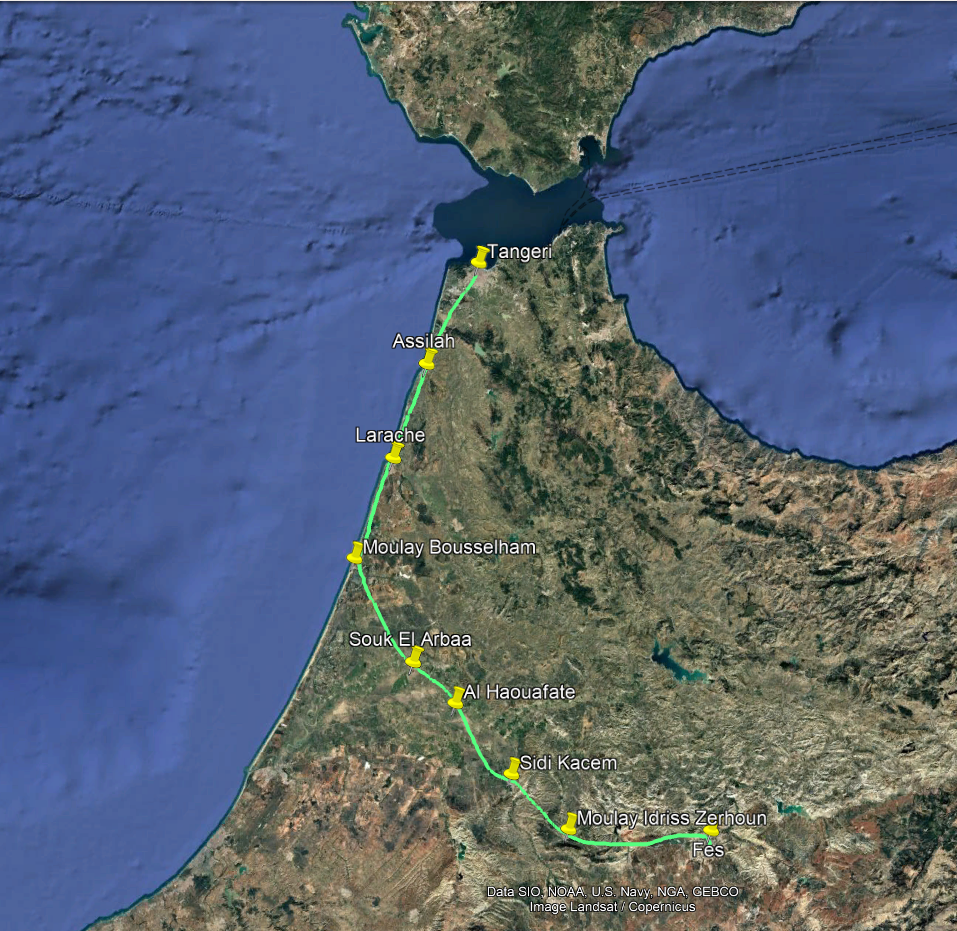
Today I set off at 6:45, but there’s already plenty of light—an earlier start at 6 would have been possible. I’m following National Road Number 1, heading towards Assilah. Alongside me, crowds of schoolchildren on their way to school.
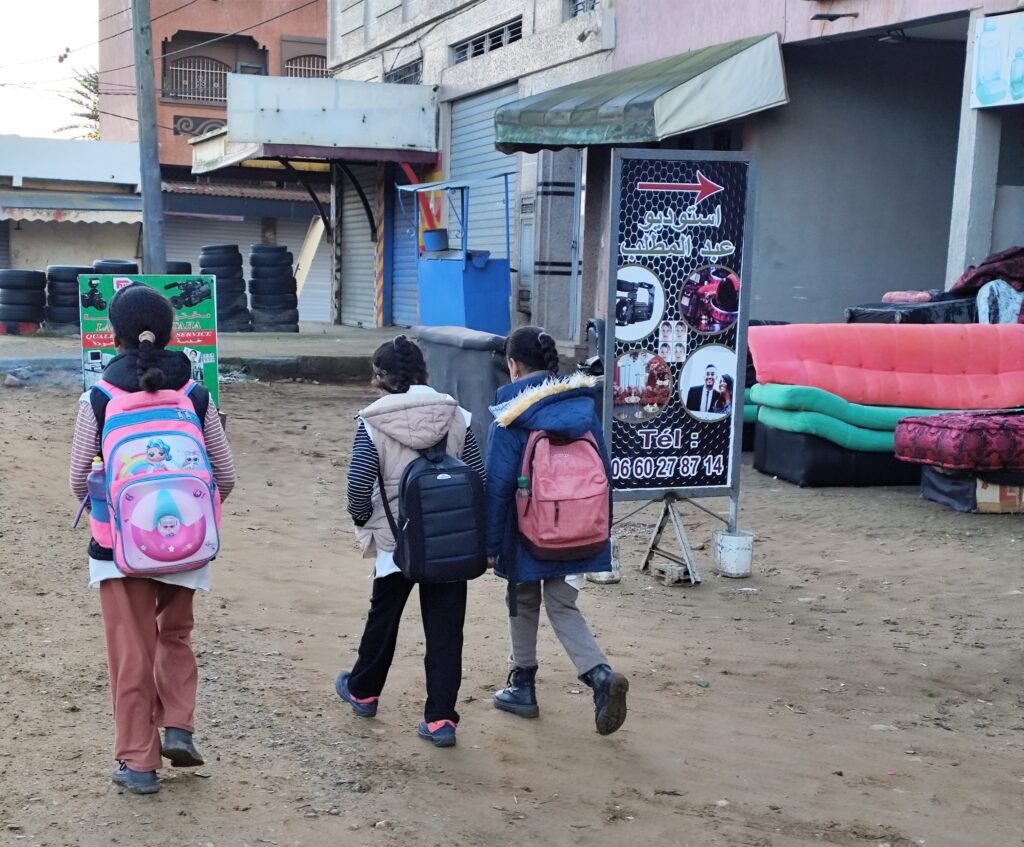
In the countryside everything happens out in the open: blacksmiths, mechanics, carpenters, fruit and vegetable vendors…life unfolds right on the streets. In the very early morning I see street sweepers on foot, each carrying two buckets. They are sweeping the sidewalk along the main avenue leading into the city.

However, street sweapers can do nothing about the trash piling up in the side streets. There are very few garbage bins along the roads.
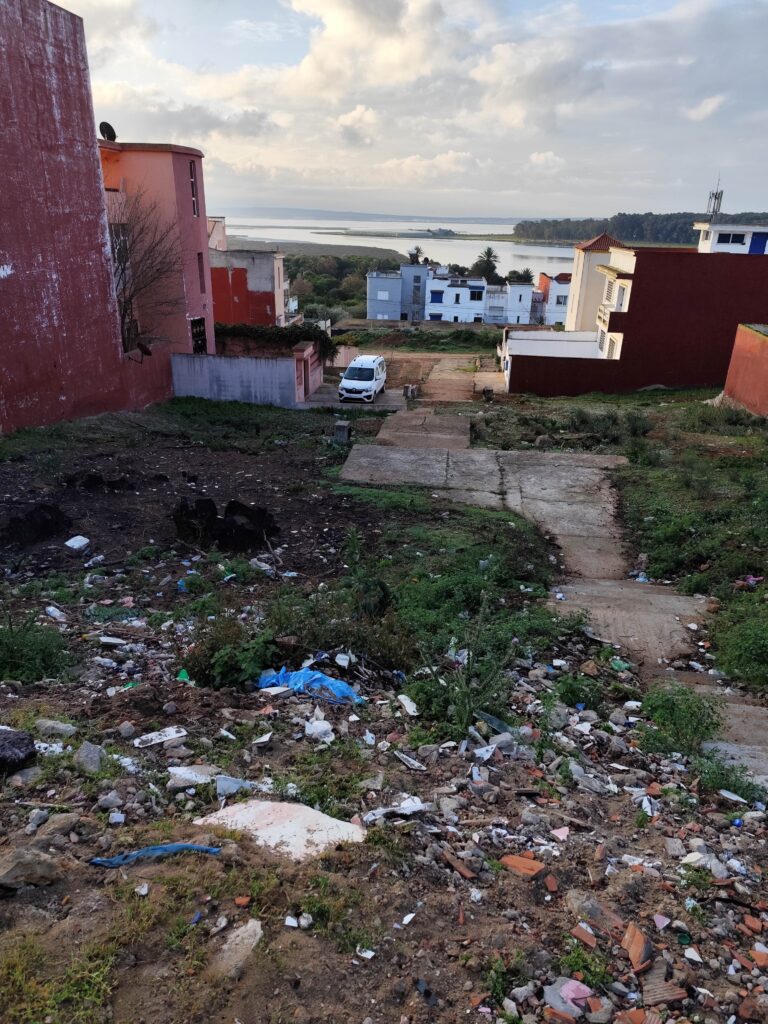
8’ o clock in the morning I come across the first strawberry plantation of the day, housed in a greenhouse. Another greenhouse like the one before, but I was mistaken—they’re not strawberries, they’re zucchinis!!! Then, a field of artichokes. Given my pace, I’d compare myself to a camel!
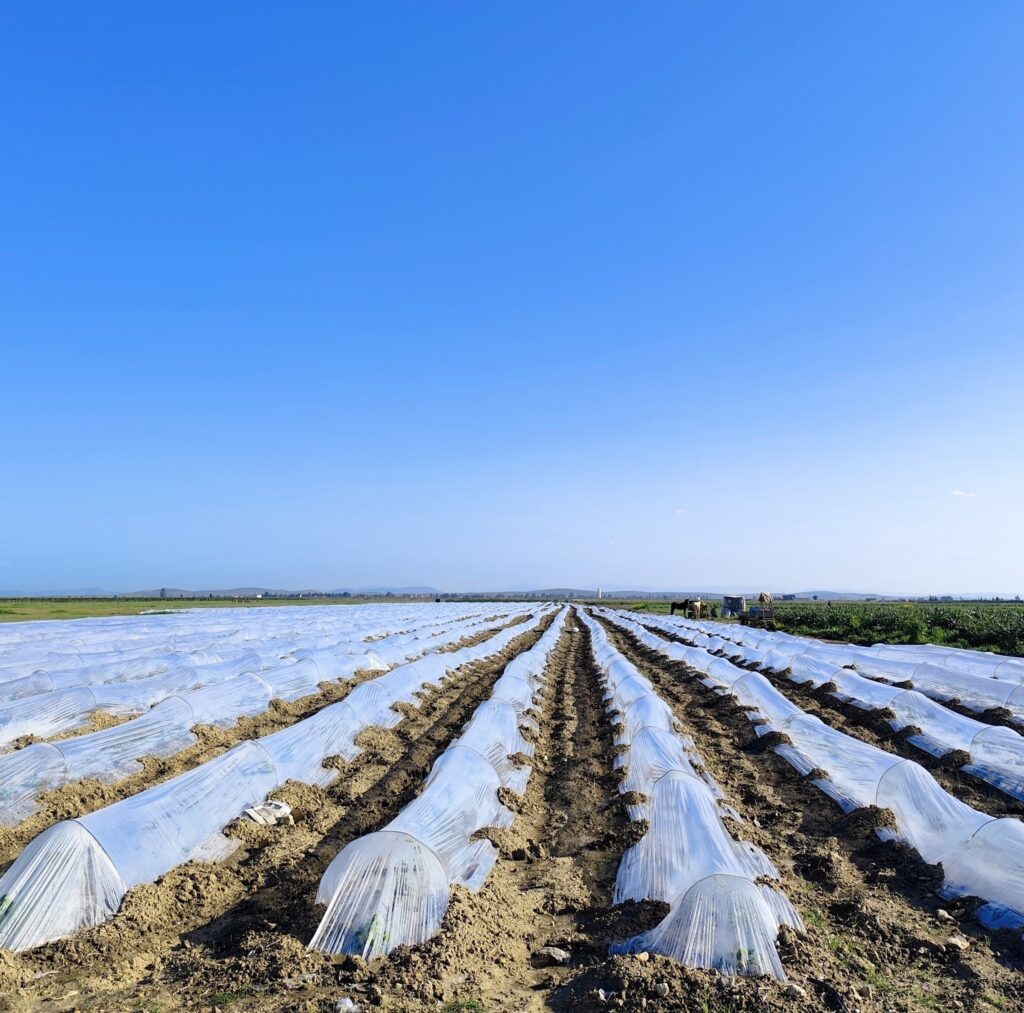
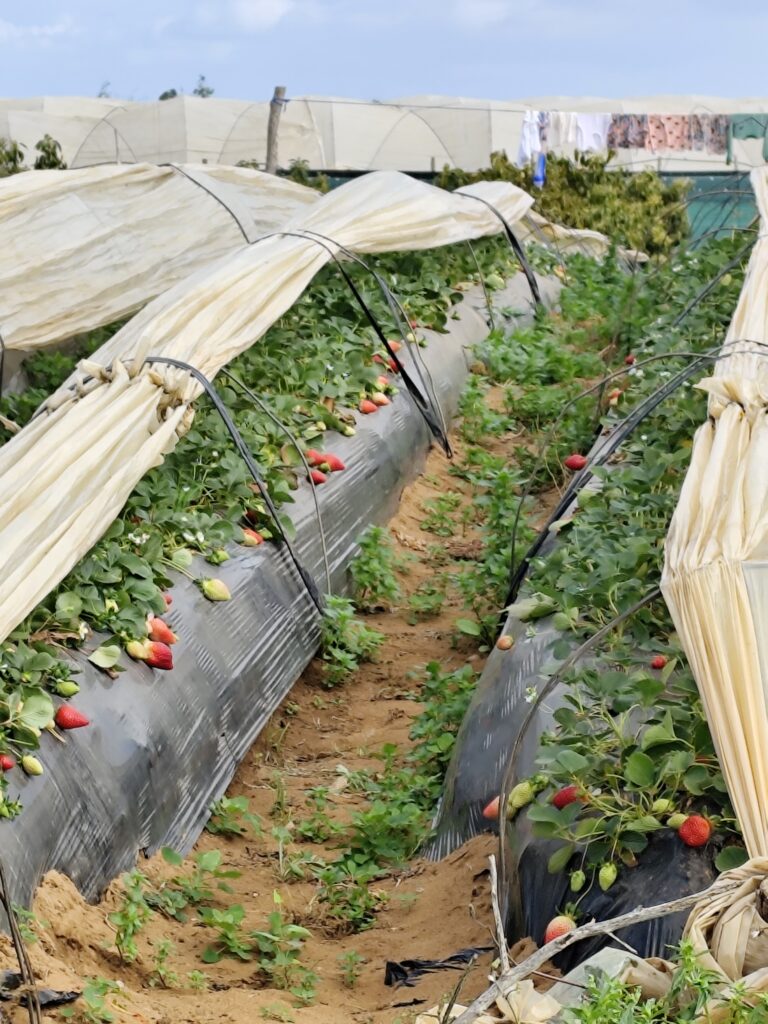
It’s midday in El Haouafate. My host Mohammed picks me up in a battered green Mercedes van, then we switch to a friend’s car to finally reach the farm. Children, the elderly, a few cows, some sheep, a horse…all housed in stables adjacent to the house. It’s a true coexistence of humans and animals.
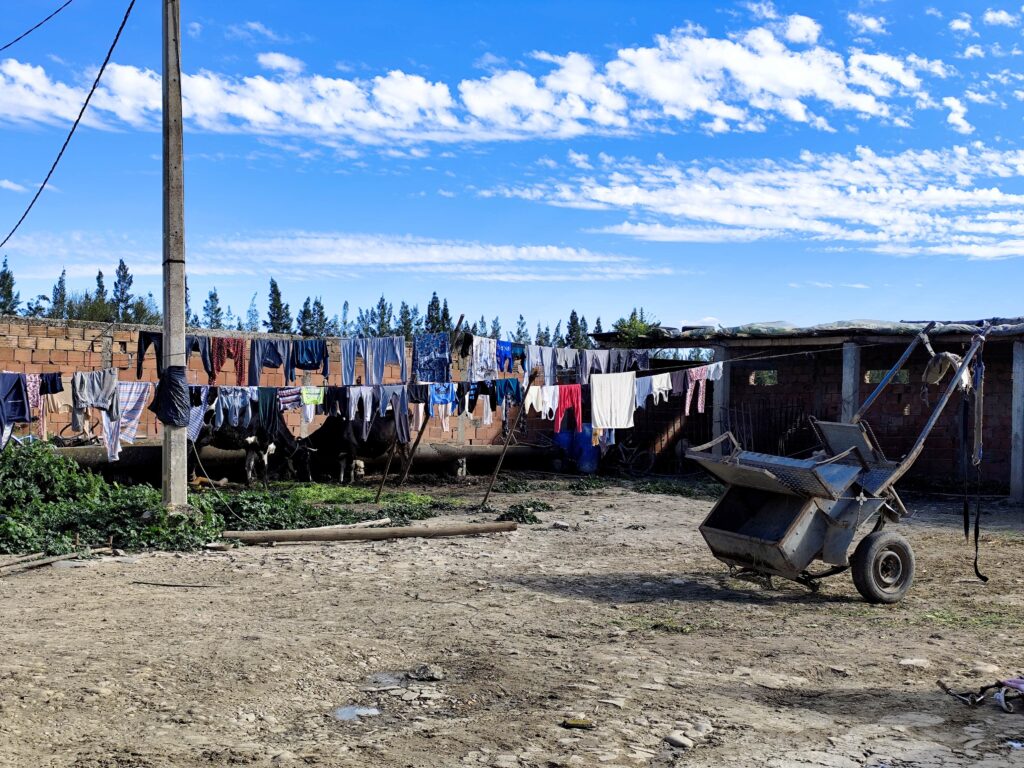
Afterward, we venture out into the farmland: a row of olive trees and large stretches of forage crops. We meet a neighbor with whom he doesn’t seem to have good relations: he asks me to be quiet as we pass him.Then we arrive at a reservoir, where some of his relatives are drawing water from a deep well, seemingly to fill it up and later use it for irrigation.
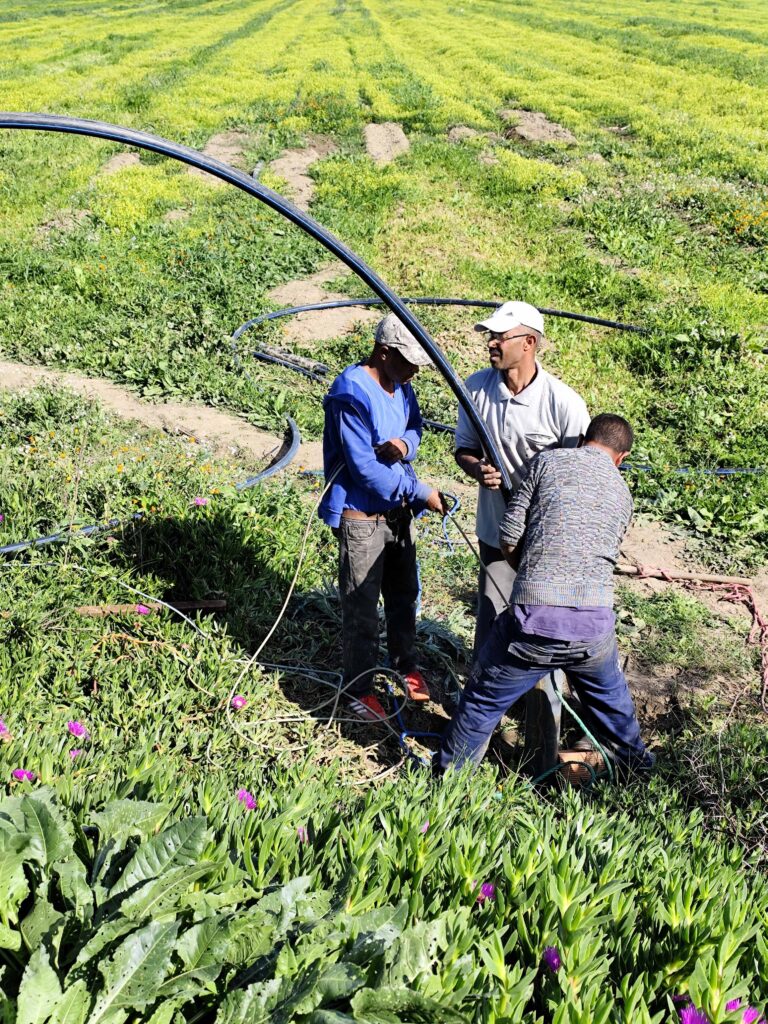
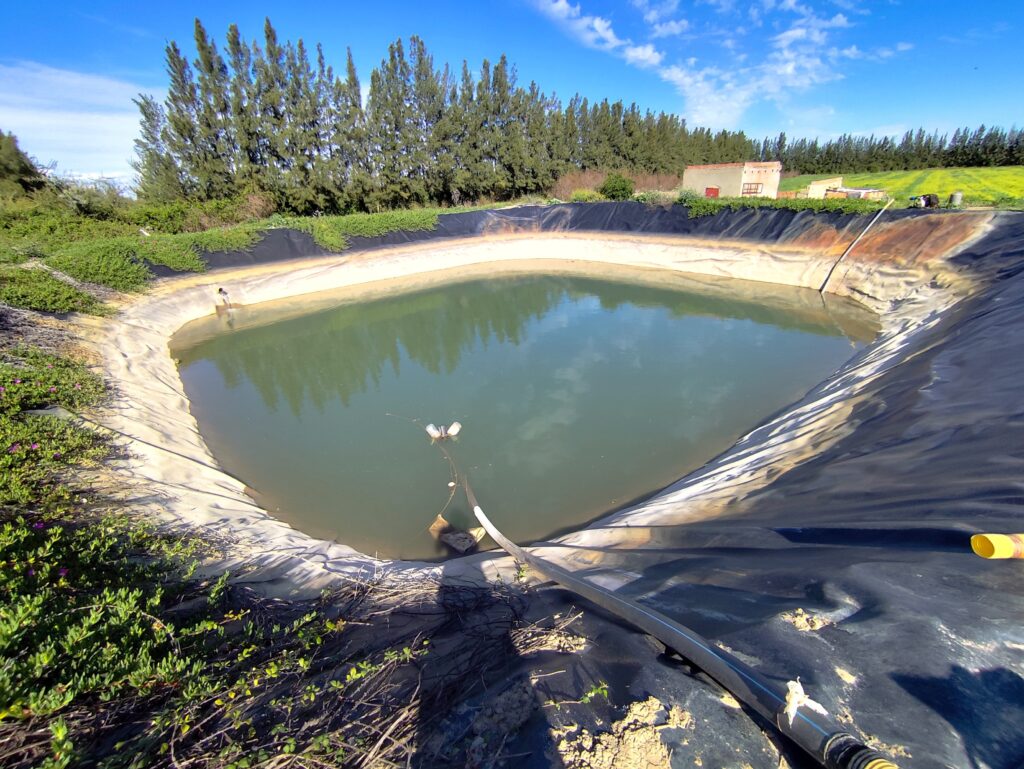
Finally I take the detour to Moulay Idriss and Volubilis, the Roman city. The hills, 300-500 meters high, are cultivated with soft wheat, completely treeless, with isolated farms. Scattered shrubs of marruca, or Christ’s thorn, dot the landscape. At last, I reach a farming village. I hear voices in the air, and there’s a school with children. Here I meet Mustafa, a man in his forties, and a friend of his. Mustafa is plowing a lentil field with a mule and a hand plow. Although agriculture is largely mechanized, some people still use horses and hand plows in a more traditional, limited manner.

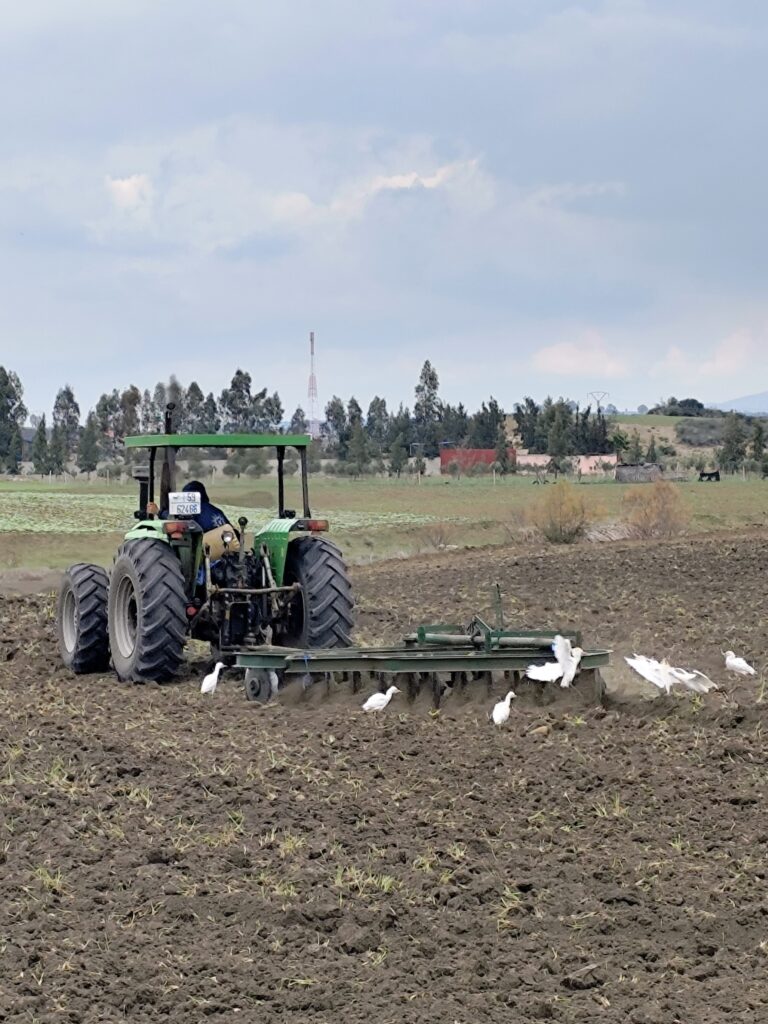
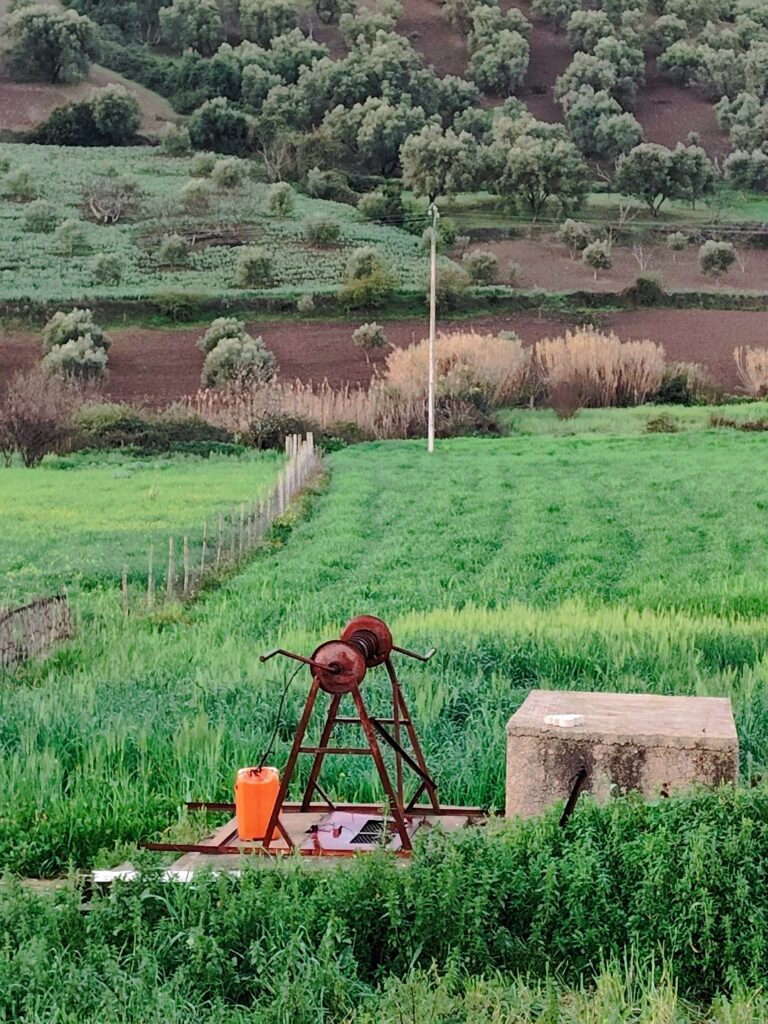
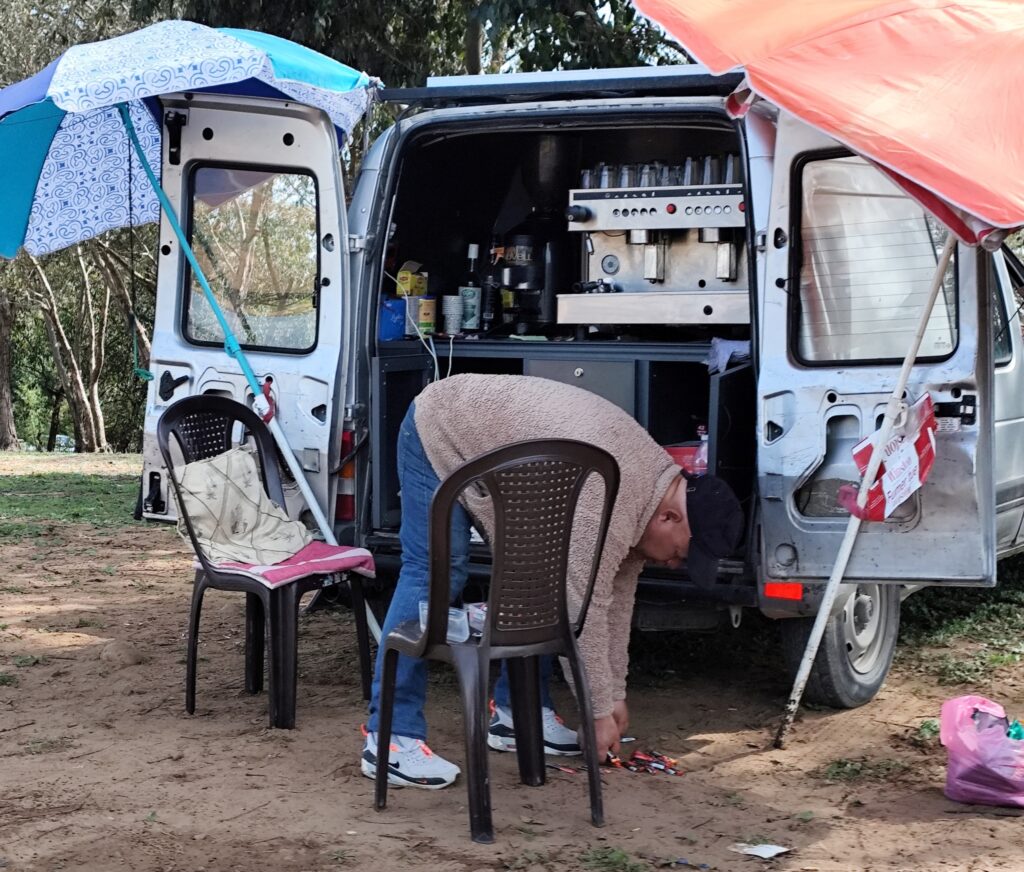
Moulay Idriss. From afar, it could be mistaken for a quarry in the mountain, but it’s actually the effect of the white facades of its clustered houses. I arrive at the main square, where there’s a market. A hustle and bustle of people, pack donkeys, boys, and children playing ball among the fruit and vegetable stalls. I call Ines, my host; she comes to pick me up after unsuccessfully trying to explain how to reach her house inside the medina. Small rooms, little staircases, a panoramic terrace, and a living room. I’ll have dinner here with harira and tagine. A holy city founded by Idriss, who fled the Middle East because he was persecuted by a caliph. The bringer of Islam to Morocco, he established the first imperial dynasty, the Idrissids. And then began the construction of Fes.
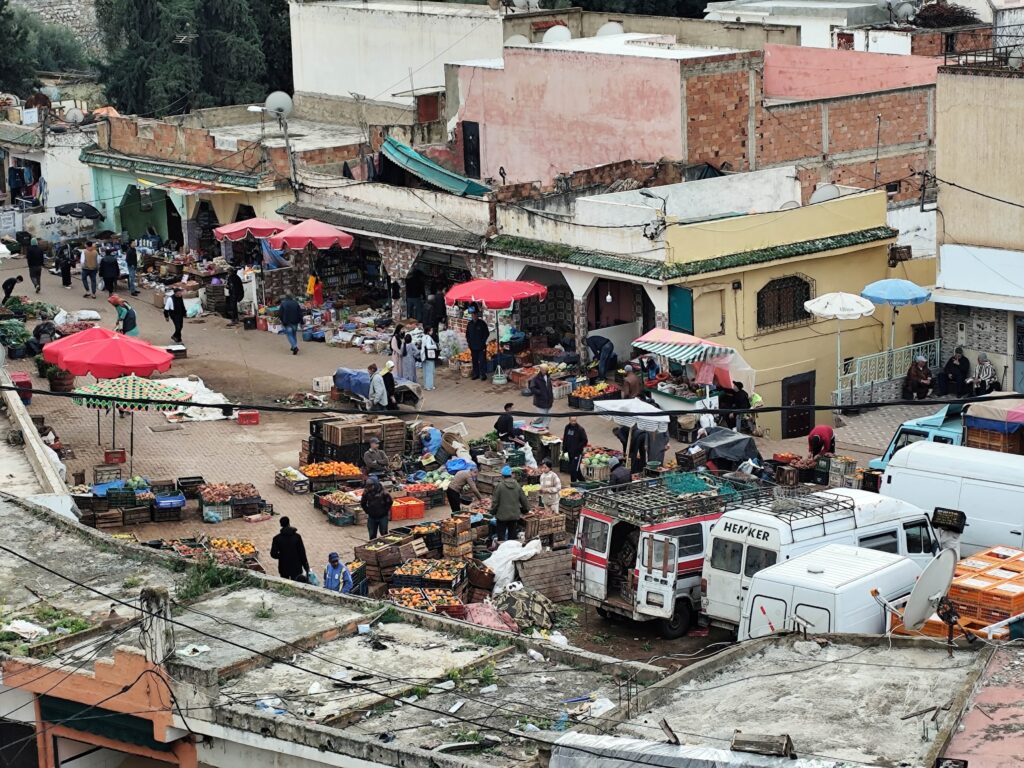
At the end of my week walking through the Moroccan countryside, I can say: there is a Morocco that waits along the road for someone or something to happen. And there is a Morocco that looks ahead and far into the future, that’s looking Europe.
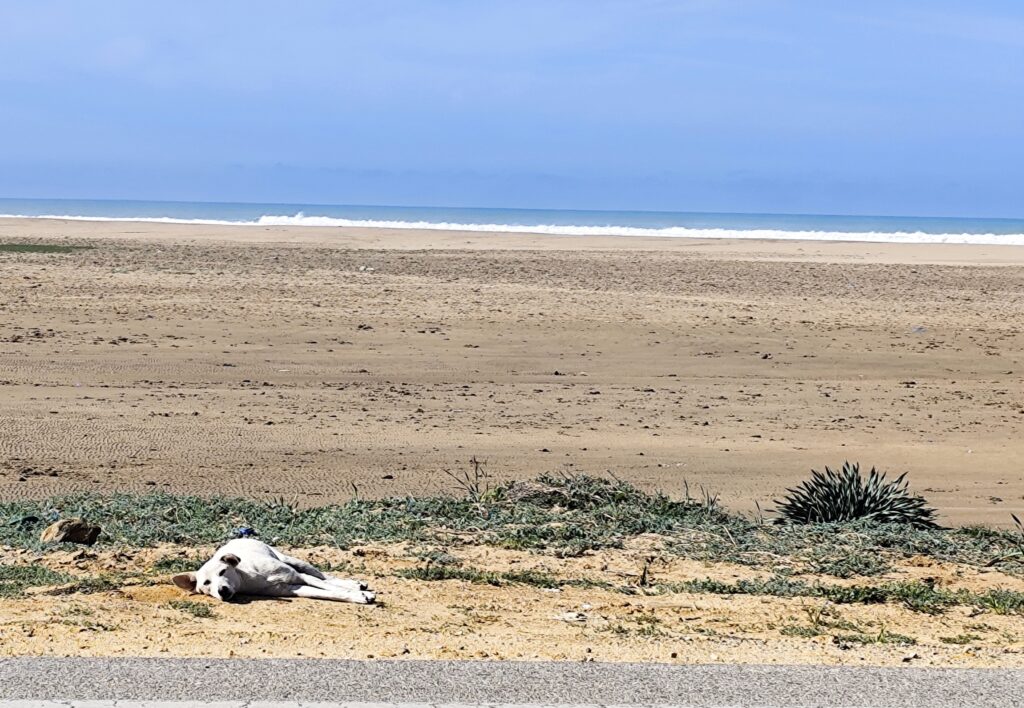
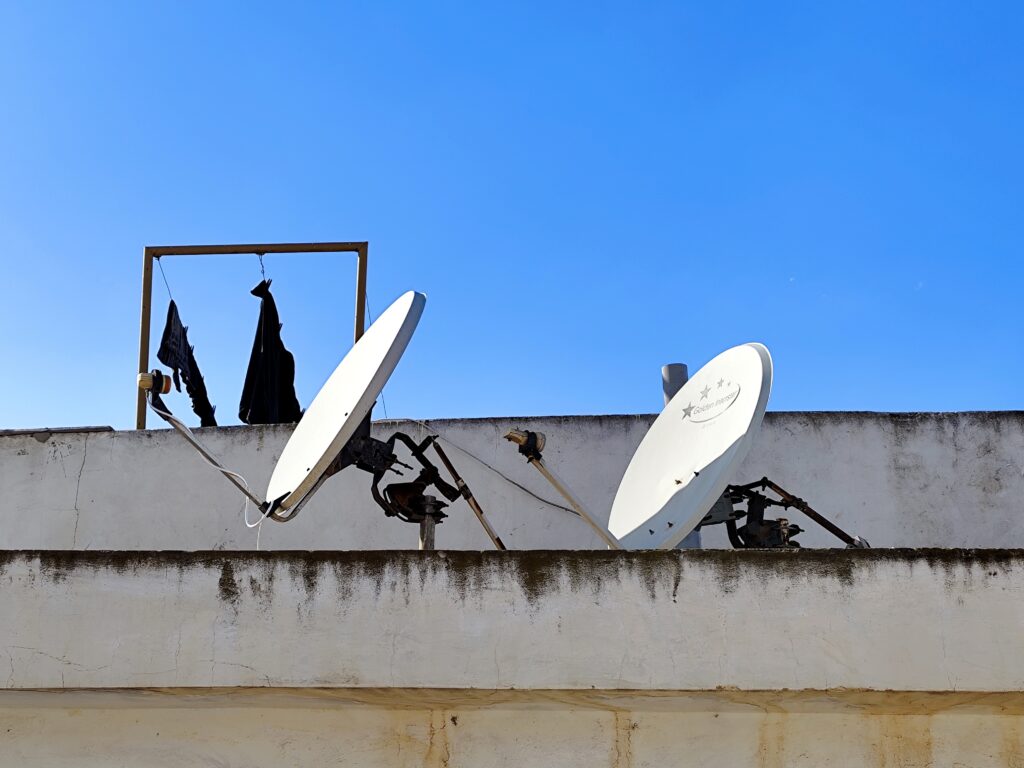

Start the discussion